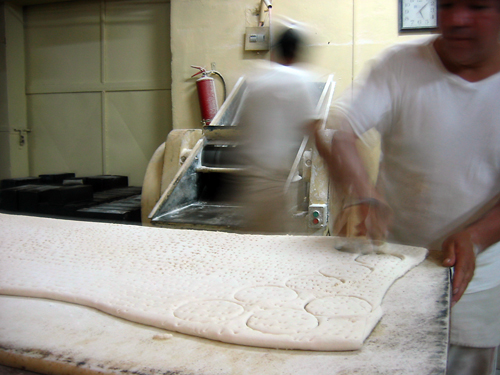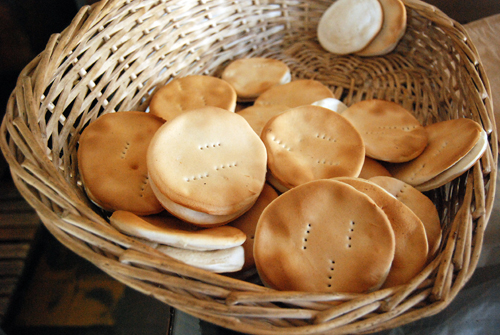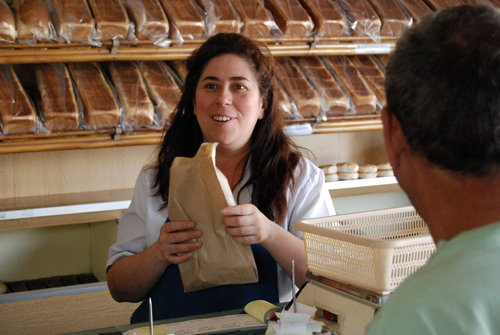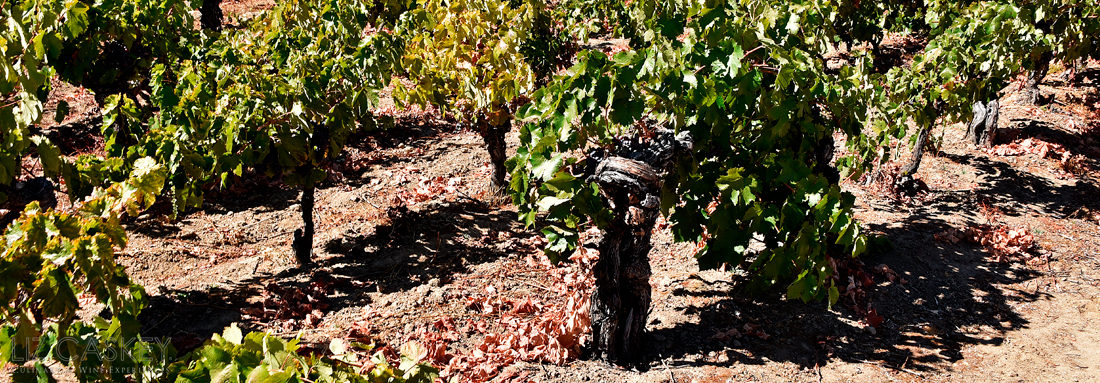
Bread junkies. Carbaholics. Chileans are not scared of white flour, or lard for that matter. Maybe that’s why the bread here tastes so damn good. And in fact, to throw out some statistics, they have an annual per capita consumption of 100kg, or 220 pounds, ranking second in the world after Germany.
Twice a day, at 7am and 6pm, the country fills with the toasty smell of yeast. Bread in Chile is abundant, varied, and still made in many homes and mom-and-pop bakeries as it has been for centuries. There is nothing I love more than walking into a bakery with baskets full of warm, crunchy, sausage-link marraquetas, dimpled hallullas (pronounced ah-you-yas), dangerous dobladitas begging for jam, the braided trenzas, and even freshly baked box bread, a must for the ubiquituous sándwiches de molde, consumed at “onces”, tea time, usually with mashed avocado, hearts of palm, and poached chicken.
My favorite bakery, San Pedro, is in my old neighborhood, Barrio Brasil, and is a bread institution dating back to the 1930s. I stumpled upon this bakery by sheer luck on a typical Saturday morning jaunt to the farmers market. Literally outside its front door, I quickly became a fan of its marraquetas, Chile’s most widely consumed bread, that I find has similiarties to the baguette (and makes some mean french toast).
San Pedro was founded by the current owner’s grandfather, Gabino Crespo, and still uses the same antique ovens and century-old technique. The paneros, breadbakers, have been dutifully making bread every day there for more than 35 years. Each morning and afternoon, batter is individually prepared in huge mixers for the marraquetas and hallullas. Marraqueta is a basic bread recipe while hallullas are much richer due to a dose of lard.
Making both breads is all about team work. For the marraquetas, large slabs of dough are loaded into a clackety old machine that chunks them down into two rounds that look like a deuce of tennis balls stuck together. They come flying off the machine so fast that if the baker misses one, they must shut off the machine or be pelted with dough balls. Arranged on 8-foot long boards, they are then passed through a second device with a long stick that simultaneously stretches and indents the dough, dividing it into four links. At this point, the dough must rest for an hour before going to the oven.

The hallulla dough is much heavier and stickier. Using a an industrial sized rolling machine, and a lot of muscle, the Baker, heaves the dough to the top and runs it through on different thicknesses (about four passes) until he achieves an elastic, homogenous. With his companion, they spread out the 8 continuous feet of dough, which reminds me of a blanket, on a work table. Using a dough docker, they prick the dough and then stamp out rounds using rustic cutters. I tried to stamp out a round of hallullas and by the end, I was beat. Maybe that’s why those guys have ripped arms.
Fifteen minutes in the oven and the breads are piled into wicker baskets and taken to the front of the store to the line of eager patrons trailing out the door. There’s something so simple and zen about making bread. It’s an art—a profession that feeds so much of the World. I am amazed how basic ingredients like flour, yeast, water, and a little fat, with a touch of alchemy, passion, and rhythm can turn into chewy, nutritious bites.
I never, ever make it home from San Pedro without attacking an hallulla in the taxi. They just too irresistible.

Panaderia San Pedro
Ricardo Cumming 905, corner Martinez de Rosas, Santiago Centro
672-4658












